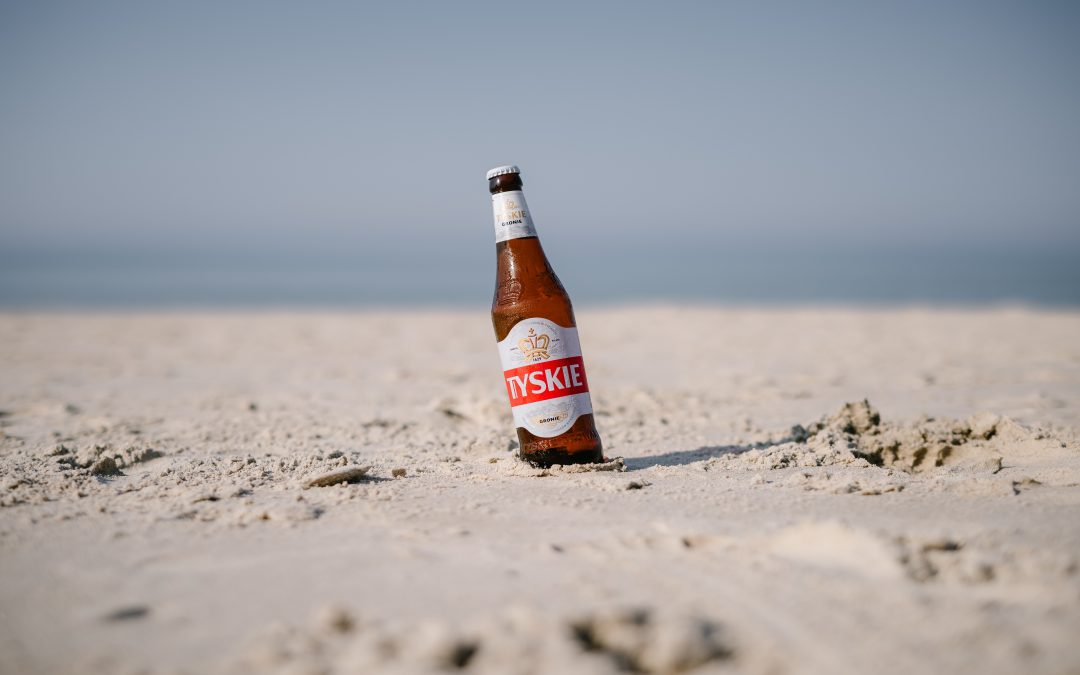Poles are buying less alcohol but spending more money on it following the introduction of a new surcharge on alcoholic and sugary drinks at the start of last year and a recent increase in excise duty.
In the 12 months through March 2022, Poles bought 4.1% less alcohol by volume than in the same period a year earlier but spent a record 40.4 billion zloty (€8.7 billion) on it, an increase of 1.4%, according to data from NielsenIQ cited by the Gazeta Wyborcza daily.
The types of alcohol purchased by Poles have also changed. Beer and vodka saw decreases in the volume of sales, by 4.4% and 3.7% respectively, whereas sales of wines (especially sparkling wines), rum and gin have increased.
Mniej pijemy wódki i piwa. Sprzedaż "małpek" spadła aż o 30 proc. https://t.co/brIV7Kun3i
— AMBRA (@ambra_sa) May 17, 2022
Despite falling sales, beer remains the drink of choice, with the 18 billion zloty spent on it (0.8% down year-on-year) accounting for almost half the total for all alcoholic drinks. The average Pole drank 97 litres of beer over the year.
“High inflation and the excise duty hike from the new year translate into higher average beer prices, which in turn reduces demand,” Bartłomiej Morzycki, director general of the Union of Brewing Industry Employers, told Gazeta Wyborcza. “As an industry, we are trapped in an inflationary and excise trap.”
Meanwhile, although Poles drank a lower volume of vodka they paid more for it, with sales rising 2.8% to 13.9 billion zloty, mostly due to rising production and transport costs and an increase in taxes, says an industry expert cited by the newspaper.
A new “surcharge”, which the government said was intended to “promote healthy consumer choices”, aimed in particular at discouraging the sale of alcohol in small units, such as mini bottles of vodka (known as małpki, or monkeys, in Polish) that are seen as a particular danger to young people and the heaviest drinkers.
“Małpki were bought and drunk for example on the way to work, so that no one would see. And since we worked remotely from home, there was nothing to hide,” said Krzysztof Brzózka, former head of the State Agency for Solving Alcohol Problems, quoted by Gazeta Wyborcza.
Since the introduction of the new tax, the sale of pure vodka in 100 ml bottles dropped by 23% while the sale of pure vodka in 200 ml bottles dropped by as much as 30%, according to data from the Market Monitoring Centre cited by the newspaper.
Meanwhile, on 1 January 2022, the excise duty on ethyl alcohol, beer, wine and other fermented beverages was raised by 10%. The government envisages further increases by 5% each year over the next five years, legal news website Prawo.pl reports. The increases, however, will not apply to cider and perry with an alcohol content of less than 5%.
Among all types of alcohol, rum recorded the biggest growth in sales (by 15%) in the new NielsenIQ data and gin grew by 12.1%. Those two drinks remain relatively niche, however, with combined sales of 400 million zloty last year compared to around 3.6 billion zloty on whisky alone.
According to World Health Organisation data from 2019, the average Pole drinks 11.89 litres of pure alcohol a year, the 20th highest consumption in the world.
Main image credit: Adrian Infernus on Unsplash

Alicja Ptak is deputy editor-in-chief of Notes from Poland and a multimedia journalist. She has written for Clean Energy Wire and The Times, and she hosts her own podcast, The Warsaw Wire, on Poland’s economy and energy sector. She previously worked for Reuters.




















